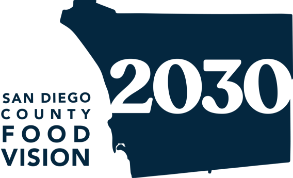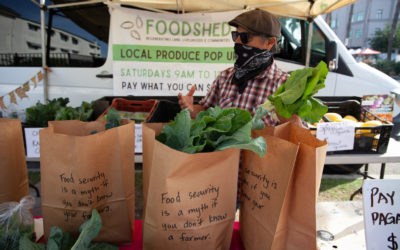Becoming a subscriber to Foodshed’s Fresh 5 program—a weekly distribution of fresh, seasonal produce, grown by the small farmers who make up the Foodshed cooperative—means you’re in for two surprises with every delivery. One is the produce itself: an ever-changing...
OBJECTIVE 5 | THE DASHBOARD
Expand Integrated Nutrition and Food Security
Indicator
National Food Insecurity
Is food insecurity in the U.S. increasing, and is there variation based on race/ethnicity?
In 2019, 10.5% of all households, or nearly 14 million people, experienced food insecurity (national data for the rise in food insecurity during the COVID-19 pandemic is not yet available). For the past 20 years, Black and Hispanic/Latinx households have had rates of food insecurity that are nearly double those of white households. From 2000 to 2010, 25% of Indigenous people were consistently food insecure (not shown).
About the data
Source: USDA Economic Research Service, Statistical Supplement to Household Food Security in the United States
Last updated: 2019
Indicator
Food Insecure San Diegans
Did the COVID-19 pandemic increase food insecurity in San Diego County?
Yes, estimates from Hunger Free San Diego show a substantial jump in food insecurity for adults and chilren as a result of the COVID-19 pandemic.
About the data
Source: Hunger Free San Diego
Last updated: 2020
Indicator
Meal Sources for Food Insecure San Diegans
Where do meals for food insecure San Diegans come from?
In 2017, the San Diego Hunger Coalition estimated that 91% of food assistance (measured in meals) in San Diego County was provided by federal programs, mostly CalFresh, meal programs for children, and WIC. The remaining 9% came from the local charitable food system, including food banks, pantries, and gleaning efforts.
About the data
Source: Hunger Free San Diego
Last updated: 2017
Indicator
San Diego County CalFresh Monthly Household Participation
Is CalFresh participation in San Diego County increasing?
Monthly household CalFresh participation was relatively flat for six consecutive years prior to the COVID-19 pandemic, averaging slightly more than 136,000 households participating in CalFresh. Monthly household CalFresh participation data for San Diego County then shows a major spike that coincided with COVID-19 stay at home orders—and resulting unemployment—starting in April 2020. From the start of the pandemic to February 2021 the number of participating households averaged about 193,000 per month. Total federal and state CalFresh benefits in San Diego County increased from $31.7 million in January 2020 to $41.3 million in June 2020, a 36% increase.
About the data
Source: California Department of Social Services, CalFresh Data Dashboard
Last updated: 2021
Indicator
CalFresh Utilization in California and San Diego County
Is San Diego County maximizing its use of federal funds for food insecure residents?
No, Nourish California calculates that 1.7 million Californians are eligible for CalFresh but do not receive benefits. This is equal to leaving over $2 billion in federal funding on the table. California’s heavily populated southern counties are eligible to receive 59% of that amount, including $228 million in San Diego County.
About the data
Source: Nourish California
Last updated: 2020





